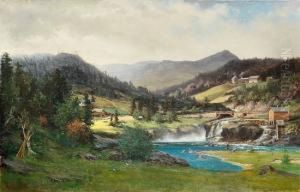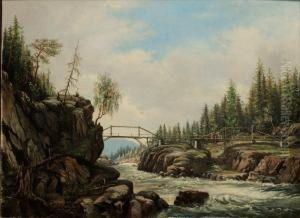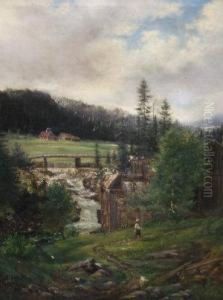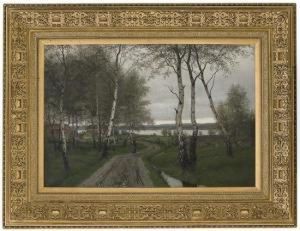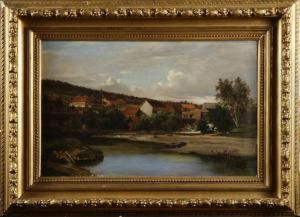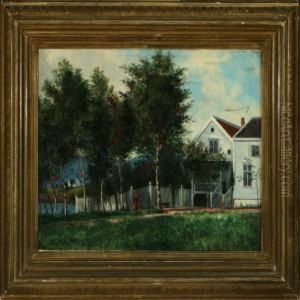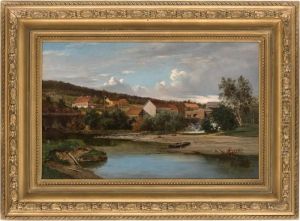Herman Wedel-Anker Paintings
Herman Wedel-Anker, born on June 13, 1845, in Kristiansand, Norway, was a notable figure in the world of Norwegian painting during the late 19th and early 20th centuries. Coming from a wealthy ship-owning family, Anker had the opportunity to pursue his interests in the arts from a young age. Despite the expectations to join the family business, his passion for art led him to seek formal training in painting.
Anker began his artistic education at the art school of Wilhelm von Hanno in Christiania (now Oslo), Norway, before moving on to further his studies in Paris. In Paris, he was deeply influenced by the contemporary art scene, particularly by the works of the French Realists and Impressionists. This exposure played a crucial role in shaping his distinctive style, which combined elements of realism and impressionism, with a strong emphasis on light and color.
Throughout his career, Herman Wedel-Anker became renowned for his portraits and landscapes. His works often depicted the Norwegian countryside and seascapes, capturing the unique Nordic light. He also painted a number of significant portraits, including those of prominent Norwegian cultural and historical figures. His contribution to Norwegian art was not only limited to his own creations but also included his role as a mentor to younger artists and his efforts to promote Norwegian art both domestically and internationally.
Anker's work received considerable recognition during his lifetime. He participated in various national and international exhibitions, earning several awards and honors. His art is characterized by a sense of warmth and a deep appreciation for the beauty of the Norwegian landscape and its people.
Herman Wedel-Anker passed away on July 15, 1922, in Oslo. His legacy lives on through his contributions to the Norwegian art scene, with his works held in high regard and featured in museums and collections in Norway and abroad. Anker's life and work remain a testament to the rich cultural heritage of Norway and its significance in the broader context of European art history.


